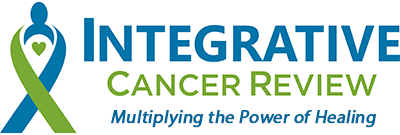
“I am up at all hours of the night, woken by the pain in my hips or the neuropathy in my feet. My guided imagery recordings help on some of those nights. On other nights, I resort to medicinal relief.”
— Janet, a 59 year old breast cancer survivor
Pain is a major concern for many people diagnosed with cancer. According to an article in the Annals of Oncology in 2012 by Pachman, et al, cancer-associated pain contributes to conditions including depression, insomnia and a decreased quality of life, but continues to be underdiagnosed and undertreated. Chronic pain occurs in about a third of patients even after curative treatment, and pain after breast surgery occurs in more than half of patients.
Sources of cancer pain can be varied and include the following, related to the cancer or its treatment:
- Cancer-related pain
- Post-surgical Pain
- Phantom pain (breast, leg, etc.)
- Neurological conditions, including neuropathy
- Pain related to breast implants/reconstruction
- Radiation-related pain, including radiation dermatitis
- Bone loss, diseases and fractures
- Chest pain/tightness
- Dermal and/or myofascial fibrosis
- Arthralgias (joint pain, especially in women taking aromatase inhibitors)
Researchers report that pain is often difficult to treat, requiring a variety of medications, including antidepressants, opioids, topical agents and steroids, all of which can have unwanted side effects.
Another chemical option increasing in awareness among some patients is medical marijuana, which despite the controversy surrounding it, may have significant benefits. The National Cancer Institute published the following statements:
- Studies in mice and rats have shown that cannabinoids may inhibit tumor growth by causing cell death, blocking cell growth, and blocking the development of blood vessels needed by tumors to grow. Laboratory and animal studies have shown that cannabinoids may be able to kill cancer cells while protecting normal cells.
- Combining cannabinoids with opioids: In a small study of 21 patients with chronic pain, combining vaporized Cannabis with morphine relieved pain better than morphine alone, while combining vaporized Cannabis with oxycodone did not produce significantly greater pain relief. These findings should be tested in further studies.
Integrative Interventions with Potential Benefits
Are there alternatives to pain management besides pharmaceuticals?
Pachman, et al, in a 2012 article in the Journal of Clinical Oncology listed a variety of more integrative interventions with potential benefits, including the following:
- Rehabilitative interventions (therapeutic exercise, occupational therapy)
- Yoga
- Neurostimulation
- Psychological interventions (relaxation therapy, CBT, guided imagery)
For the arthralgia, or joint pain, associated with aromatase inhibitors, researchers asserted that the most promising treatments include testosterone supplementation, acupuncture, and omega-3 fatty acids.
Chronic Pain and the Brain
Chronic pain can cause changes and impairments in the anatomy of the brain, but according to M. Catherine Bushnell, PhD, of the National Center for Complementary and Integrative Health, yoga can reverse those negative changes. In a May, 2015 American Pain Society statement, Bushnell reported that compelling evidence from studies conducted at NIH/NCCIH and other sites demonstrate that mind-body techniques, such as yoga and meditation, can counteract the negative effects of chronic pain on the brain anatomy. Bushnell stated, “Practicing yoga has the opposite effect on the brain as does chronic pain.”
For more information on pain management with yoga, check out Yoga for Pain Relief: Simple Practices to Calm Your Mind and Heal Your Pain, by Kelly McGonigal, PhD., a health psychologist and lecturer at Stanford University. In this popular book, McGonigal provides research and practical tips for dealing with pain, and simple to follow instructions for practices, including powerful breathing, body awareness, relaxation and meditation techniques. Yoga for the Rest of Us: Easy Yoga for Easing Pain with Peggy Cappy is a DVD that is another resource that provides a path to relieving aches and pains. In Easy Yoga for Easing Pain, Peggy Cappy demonstrates yoga movements that can increase flexibility, reduce joint pain, combat fatigue and enhance overall well-being.













